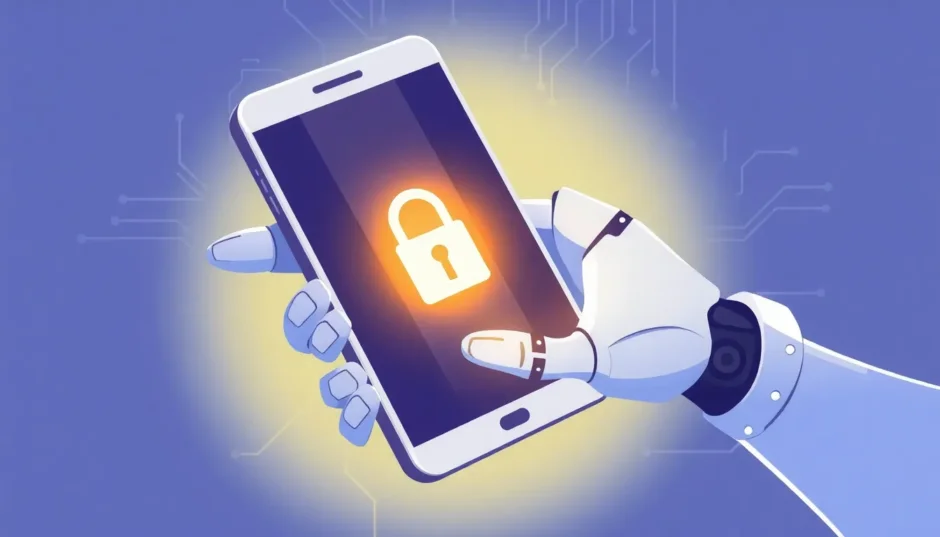Ever found yourself staring at a locked Android screen, completely blocked from your own device because you can’t remember your Google account details? You’re definitely not alone in this situation. Google’s Factory Reset Protection (FRP) feature, which first appeared in Android 5.1 Lollipop, was designed to protect your personal information if your phone got lost or stolen. But what happens when you legitimately own the device and still can’t get past this security barrier?
This is where various FRP bypass methods come into play, and one name you might have encountered during your search for solutions is addROM. The addROM bypass approach has been discussed in many online forums and tech communities as a potential way to get around Google’s FRP security. But does this method actually work, and more importantly, is it safe and reliable for your device?
In this comprehensive guide, we’ll take a deep dive into the world of addROM FRP bypass methods, examine how they work, and explore whether they’re worth your time and effort. We’ll also introduce you to a more reliable and user-friendly alternative that can save you from the technical headaches often associated with manual bypass methods.
Table of Contents
- Understanding Factory Reset Protection and Why It Exists
- What Exactly is addROM Bypass?
- How addROM Bypass Methods Claim to Work
- The Reality of Using addROM for FRP Bypass
- Limitations of addROM Bypass in Modern Android Environments
- A More Reliable Alternative to addROM Bypass
- Key Advantages of Using Professional FRP Unlocking Tools
- Step-by-Step Guide to Using LockWiper (Android) for FRP Removal
- Understanding the Difference Between Bypass and Removal
- Cost Considerations: Free vs. Paid Solutions
- Security and Legal Considerations
- The Future of FRP and Bypass Methods
- Making the Right Choice for Your Situation
Understanding Factory Reset Protection and Why It Exists
Before we jump into the specifics of addROM bypass methods, it’s important to understand what FRP is and why Google implemented it in the first place. Factory Reset Protection is essentially Google’s way of preventing unauthorized access to your Android device after it’s been reset. Think of it as a secondary security layer that kicks in when someone tries to wipe your device clean.
When FRP is active, anyone attempting to set up the device after a factory reset must enter the Google account credentials that were previously synced on the device. This clever security measure makes stolen phones much less valuable to thieves, as they can’t simply reset the device and sell it or use it themselves.
However, this well-intentioned security feature can become a significant problem for legitimate users in several common scenarios:
- You bought a used phone from someone who forgot to remove their Google account
- You can’t remember the password to your own Google account
- You’ve changed your phone number and can’t receive the two-factor authentication codes
- You inherited a device from a family member who passed away
- Your account was compromised and you can’t access it anymore
These situations leave many Android users feeling frustrated and searching for ways to bypass the FRP lock, which brings us to methods like the addROM approach.
What Exactly is addROM Bypass?
When people talk about addROM bypass, they’re typically referring to a website that provides APK files specifically designed to help users get around FRP locks on Android devices. The concept behind this method involves downloading and installing a special application package that can disable or work around the FRP verification process.
The addROM website gained popularity because it offered different versions of their bypass APK tailored to specific Android versions. This was particularly appealing to users because FRP implementation can vary between different Android releases, and a one-size-fits-all solution rarely works effectively.
The basic premise of using addROM for FRP bypass involves downloading the appropriate APK file for your specific Android version, then finding a way to install it on your locked device. In theory, once this APK is successfully installed and run, it would disable the FRP check and allow you to complete the device setup process without needing the previous Google account credentials.
How addROM Bypass Methods Claim to Work
The technical approach behind addROM bypass methods typically relies on exploiting vulnerabilities in the Android setup wizard or using special techniques to install applications before the FRP verification is complete. Different versions of the addROM APK target different security weaknesses that may exist in various Android versions.
For example, older Android versions (particularly Android 5 through 8) had more known vulnerabilities that could be exploited during the setup process. The addROM website provided specific APK files for these Android versions, with instructions (though often incomplete) about how to install them.
The installation process usually involves techniques like using the Google Voice Assistant to access browser functionality, downloading the APK from the addROM website, and then installing it through package installer activities that might be accessible during setup. When successful, the addROM APK would then run and disable the FRP checks, allowing the user to proceed with device setup.
The Reality of Using addROM for FRP Bypass
While the concept of using addROM APK files to bypass FRP might sound straightforward, the actual experience often proves to be much more complicated and unreliable. Many users who have attempted this method report various challenges and limitations that make it less than ideal for most people.
One of the biggest issues with the addROM approach is that the website and method haven’t been consistently updated to work with newer Android versions. As Google continues to patch security vulnerabilities in each new Android release, older bypass methods like those offered by addROM become increasingly obsolete.
Users attempting to use addROM bypass on devices running Android 9, 10, 11, or especially Android 12 and beyond often find that the method simply doesn’t work anymore. The specific vulnerabilities that these APK files targeted have been patched, leaving users with non-functional solutions and continued FRP lock issues.
Another significant challenge is the lack of comprehensive instructions and support. The addROM website primarily provides the APK files but offers minimal guidance on how to actually install and use them successfully. For users who aren’t technically inclined, this can be an insurmountable obstacle.
Even when users manage to find installation instructions through third-party sources or video tutorials, the process often involves multiple complicated steps that must be performed exactly right. A single mistake can leave the device in an even worse state, sometimes resulting in being stuck on certain screens or requiring additional complicated fixes.
The absence of reliable support is another major drawback of the addROM bypass approach. When users encounter problems or the method doesn’t work as expected, there’s no official support channel to turn to for help. Users are left to search through online forums and hope that someone else has encountered and solved the same problem.
Security concerns also surround the use of third-party APK files from sources like addROM. Since these files aren’t available through official app stores like Google Play, there’s no verification process to ensure they don’t contain malware or other harmful code. Installing unknown APK files always carries some level of risk, and this is particularly concerning when dealing with device unlocking tools.
Limitations of addROM Bypass in Modern Android Environments
As Android continues to evolve, Google has significantly strengthened FRP protections and closed many of the vulnerabilities that tools like addROM relied upon. This has made the addROM bypass approach increasingly ineffective for newer devices and Android versions.
The addROM website doesn’t provide specific APK files for Android versions beyond 8.0, which means users with newer devices are essentially out of luck when it comes to this particular method. Given that Android has released multiple major versions since 8.0 (including Android 9, 10, 11, 12, 13, and now 14), this represents a significant limitation.
Even for devices running older Android versions where addROM APK files are available, recent security patches may have closed the specific vulnerabilities that these tools exploit. Many manufacturers release security updates that address FRP bypass methods, meaning that even if you have an older Android version, it might still be patched against these exploits.
The variability between different device manufacturers also complicates the addROM bypass approach. FRP implementation can differ between Samsung, LG, Google Pixel, and other Android devices, making a universal solution increasingly difficult to maintain. What works for one device model might completely fail on another, even if they’re running the same Android version.
A More Reliable Alternative to addROM Bypass
Given the limitations and challenges associated with addROM bypass methods, many users find themselves looking for more reliable and user-friendly alternatives. This is where dedicated FRP unlocking tools like iMyFone LockWiper (Android) come into the picture, offering a more streamlined and supported approach to resolving FRP lock issues.
Unlike the addROM approach, which relies on finding and exploiting specific vulnerabilities, professional tools like LockWiper (Android) use more sophisticated methods to properly remove FRP locks without compromising device security or stability. These tools are regularly updated to work with new Android versions and device models, ensuring compatibility across a wide range of devices.
iMyFone LockWiper (Android).Android Unlocker forScreen Lock & FRP.Remove all types of Android screen passcodes: PIN, pattern, password, fingerprints, face ID.Bypass FRP & Google account verification for Samsung, Xiaomi, Redmi, and Oneplus without password.Unlock Samsung screen lock without losing data.Factory reset Android Phones & tablets in 5 minutes.Support 6,000+ Android phones, tablets including devices running on Android 15.0.iMyFone LockWiper (Android) is intended for use only with the informed consent of the device’s lawful owner.

Check More Details | Download Now! | Check All Deals
Key Advantages of Using Professional FRP Unlocking Tools
When comparing manual methods like addROM bypass with professional tools like LockWiper (Android), several key advantages become immediately apparent:
Regular Updates and Broad Compatibility Professional tools are consistently updated to support new Android versions and device models. While addROM hasn’t been updated to support Android versions beyond 8.0, tools like LockWiper (Android) support devices running the latest Android versions, including Android 15. This ensures that users with newer devices aren’t left without solutions.
Comprehensive Guidance and Support Unlike the addROM approach, which provides minimal instructions, professional tools offer step-by-step guides and customer support. This significantly reduces the learning curve and helps users successfully resolve their FRP issues without getting stuck partway through the process.
Higher Success Rates Professional tools typically offer much higher success rates compared to manual methods like addROM bypass. This is because they’re specifically designed and tested for this purpose, rather than relying on potentially patched vulnerabilities.
Safety and Security Tools from reputable companies are less likely to contain malware or cause additional problems with your device. They undergo proper testing and development processes to ensure they work safely and effectively.
Time Efficiency What might take hours of research and trial-and-error with manual methods can often be accomplished in minutes with professional tools. The streamlined processes save significant time and frustration.
Step-by-Step Guide to Using LockWiper (Android) for FRP Removal
To give you a better understanding of how much simpler professional tools can be compared to manual addROM bypass methods, here’s an overview of the process using iMyFone LockWiper (Android):
The first step involves downloading and installing the software on your computer, then launching it and selecting the FRP removal option. The interface guides you through each step clearly, unlike the often confusing process of finding and using the correct addROM APK for your specific device.
Once the software is running, you’ll connect your Android device to the computer using a USB cable. The program will detect your device and guide you through the necessary preparation steps, which may include enabling certain options like USB debugging or OEM unlocking if they’re accessible on your device.
The software then identifies your specific device model and downloads the appropriate data package needed for the FRP removal process. This automated matching eliminates the guesswork involved in finding the right addROM version for your Android version and device model.
After the necessary packages are downloaded and prepared, the software guides you through putting your device into the required mode (typically download mode for Samsung devices) and then handles the actual FRP removal process automatically. The entire procedure is much more straightforward than manually installing addROM APK files and hoping they work.
Throughout the process, clear instructions are provided on-screen, and if any issues arise, customer support is available to help troubleshoot. This level of guidance is completely absent when attempting addROM bypass methods on your own.
Understanding the Difference Between Bypass and Removal
An important distinction to understand when comparing addROM methods with professional tools is the difference between “bypassing” and “removing” FRP. The addROM approach typically involves bypassing the FRP check—essentially finding a way around it without actually removing the underlying lock.
In contrast, tools like LockWiper (Android) actually remove the FRP lock from your device, allowing you to set it up completely fresh without any lingering account verification requirements. This represents a more permanent and comprehensive solution compared to bypass methods.
When you use addROM or similar bypass methods, you might find that certain limitations remain even after successfully bypassing the initial FRP check. Some device features might not work properly, or you might encounter issues with future updates. Proper FRP removal avoids these potential complications.
Cost Considerations: Free vs. Paid Solutions
The addROM bypass method is often attractive to users because it appears to be free—you just download the APK and attempt the bypass yourself. However, this “free” solution often comes with hidden costs in terms of time spent, potential security risks, and the frustration of dealing with an unreliable method.
Professional tools like LockWiper (Android) typically require purchasing a license, but they offer free trial versions that allow you to verify whether the tool will work with your specific device before making any payment. This trial approach lets you confirm compatibility and effectiveness without initial financial commitment.
When you consider the value of your time and the importance of reliably resolving the FRP issue, the cost of professional tools often represents a better overall value compared to spending hours or even days attempting manual methods that may not work.
Security and Legal Considerations
It’s important to address the security and legal aspects of FRP removal methods. Both addROM bypass and professional tools like LockWiper (Android) should only be used on devices that you legitimately own or have explicit permission to unlock.
FRP exists as a security feature to protect device owners from unauthorized access, and circumventing it on devices you don’t own is both unethical and potentially illegal. Always ensure you have proper ownership or authorization before attempting any FRP removal methods.
From a security perspective, professional tools from reputable companies generally pose less risk than downloading unknown APK files from websites like addROM. When you download and install third-party APK files, you’re potentially exposing your device to malware or other security threats.
The Future of FRP and Bypass Methods
As Android continues to evolve, Google will likely continue strengthening FRP protections and closing vulnerabilities that bypass methods rely upon. This means manual methods like addROM bypass will probably become even less effective over time, while professional tools will continue adapting to new security measures.
The ongoing cat-and-mouse game between security features and bypass methods means that solutions need to be regularly updated to remain effective. This is another area where professional tools have an advantage over static solutions like the addROM APK files, which haven’t seen significant updates in years.
For users dealing with FRP locks, this evolving landscape underscores the importance of choosing solutions that are actively maintained and updated. Methods that worked a year ago might be completely ineffective today, and solutions that work today might not work tomorrow without proper updates.
Making the Right Choice for Your Situation
When faced with an FRP lock on your Android device, you have several options to consider. Manual methods like addROM bypass might seem appealing due to their apparent low cost, but they come with significant limitations in terms of reliability, support, and compatibility with modern devices.
Professional tools like iMyFone LockWiper (Android) offer a more reliable, supported, and user-friendly approach to resolving FRP issues. While they involve some cost, they typically provide much better value when you consider the time saved and higher success rates.
iMyFone LockWiper (Android).Android Unlocker forScreen Lock & FRP.Remove all types of Android screen passcodes: PIN, pattern, password, fingerprints, face ID.Bypass FRP & Google account verification for Samsung, Xiaomi, Redmi, and Oneplus without password.Unlock Samsung screen lock without losing data.Factory reset Android Phones & tablets in 5 minutes.Support 6,000+ Android phones, tablets including devices running on Android 15.0.iMyFone LockWiper (Android) is intended for use only with the informed consent of the device’s lawful owner.

Check More Details | Download Now! | Check All Deals
Before attempting any FRP removal method, it’s always worth checking if you can resolve the issue through official channels first. If you’ve forgotten your Google account password, Google’s account recovery process might be able to help you regain access without needing to bypass FRP.
If official recovery options aren’t feasible, and you need to resolve an FRP lock on a device you legitimately own, professional tools typically offer the most reliable and straightforward solution. Their regular updates, comprehensive support, and high success rates make them worth considering over manual methods that may be outdated or unreliable.
The addROM bypass method represents an interesting chapter in the ongoing story of Android FRP solutions, but for most users today, more modern and supported approaches offer better results with less frustration. As with any technical solution, the right choice depends on your specific device, technical comfort level, and how much time you’re willing to invest in the process.
Some images in this article are sourced from iMyFone.
 TOOL HUNTER
TOOL HUNTER 


